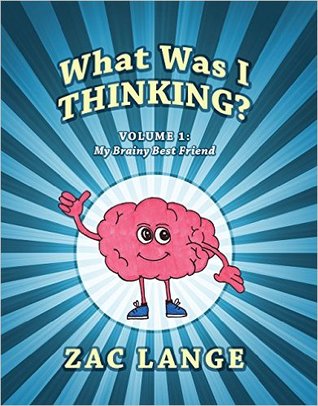
"As much as I love my brain, sometimes it seems like it takes a break for a while and forgets to tell me." Who hasn't had that feeling at one time or another? The narrator of the story imagines his brain snoozing in a hammock under some palm trees while taking a break. That is the reason he decides to kick a ball inside the house and winds up breaking his mother's favorite vase. As soon as his mother sees the damage she asks, "What were you thinking?" Of course he didn't think, he just did it. And then, when the damage is done, his brain decides to show up again. Kids and parents alike will recognize such a familiar situation and the results. Our narrator and his brain come up with a plan to avoid this trouble in the future; a plan which begins with STOP and THINK.
Readers will find plenty to laugh about in the story and the illustrations. The boy and his brain do everything together (except when Brain takes those unexpected breaks). A picture of the boy when he was a baby shows his brain nearby, also wearing a diaper. When the boy is at the playground, he is on one end of the see-saw and his brain is on the other. His mother is also shown in humorous ways. When she hears the vase break and runs into the room, she is shown dressed as a police officer and the boy is in a prison uniform. When he claims it was an accident, the picture shows his mother behind the desk at "Moms' Olde Tyme Excuse Shoppe" pointing to 'No Sale" because she does not buy his excuse. (That's probably my favorite of the illustrations.)
Youngsters will enjoy the story line and see the similarities to their own experiences. Parents and teachers will appreciate the suggestion to stop and consider consequences before acting. Talking about what happens in the story can lead to a very helpful discussion on thinking things through instead of acting impulsively. It could also spark a class discussion where students might share their own memories of times when they should have taken a moment to consider their actions, but didn't.
Recommended for children up through elementary school age, as well as the adults who care for them.
I received a copy from the author for review purposes.
No comments:
Post a Comment